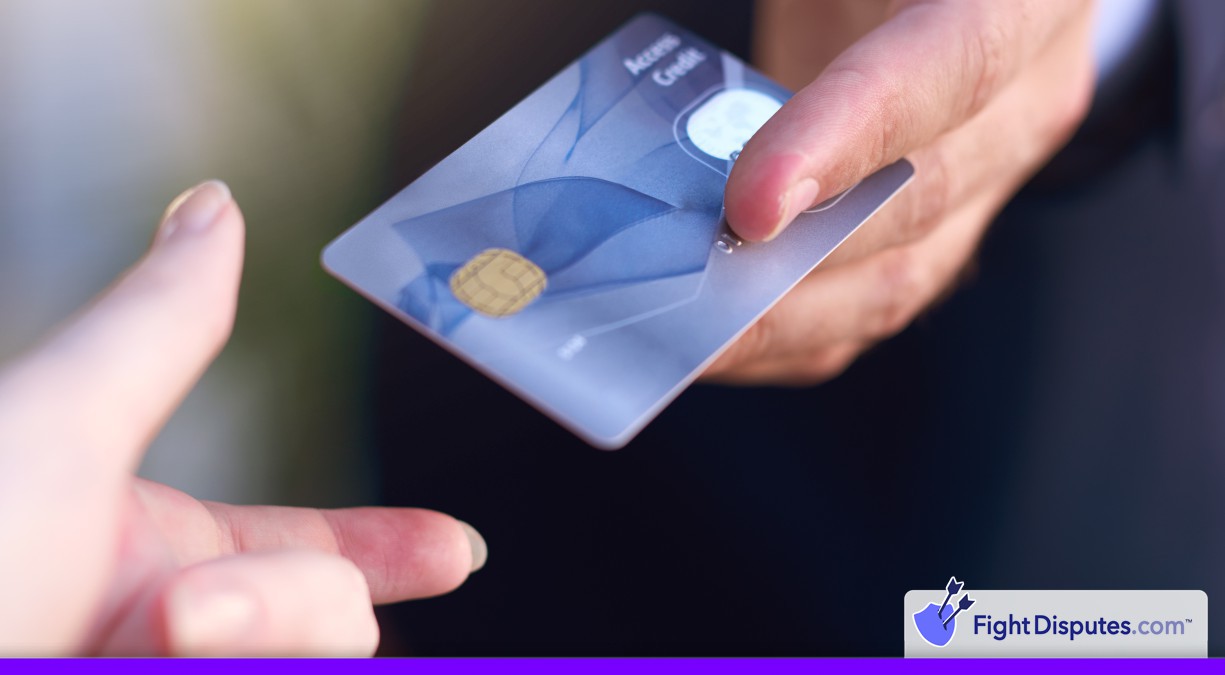DA: Declined Authorization
Payment processors decline transactions for valid reasons. But merchants sometimes push these charges through anyway, and this basic violation of the card network laws creates what we call DA chargebacks that merchants almost never have a chance of winning.
DA chargebacks happen when the authorization system flat-out says “no” to a transaction. But the charge still shows up on the customer’s statement – it might happen through manual overrides or through system glitches – and either way, these violations hurt a merchant’s standing with their payment processor and create disputes that drain time and money with almost no chance of success.
Merchants who prevent DA chargebacks can wipe out these completely avoidable losses and stay on the right side of their payment processor at the same time.
How It Works
Credit card declines at checkout are supposed to be the end of the story for that particular transaction. 9 times out of 10, that’s just how it goes, and the system does its job. But sometimes these transactions get messy. The merchant’s payment processing system hits a technical glitch that pushes it through even with the decline, or an employee at the register decides to manually override the system when they see that decline message pop up on their screen. These two scenarios create the perfect setup for what the payment industry calls a DA chargeback.
Most of these situations actually start out the same way – a customer walks in and tries to buy something. But their credit card gets declined. Maybe they don’t have enough money left in their account, or maybe their card expired last month, or they mistyped the security code on the keypad. The payment gateway does just what it should and sends a decline message straight back to the merchant’s system. Then the process starts to break down. Sometimes the cashier gets flustered and accidentally hits that override button, or maybe the system has a glitch and processes the payment twice anyway – even though it was already declined.
Decline-related chargebacks have fairly predictable causes. Insufficient funds tops the list of problems – customers just don’t have enough money in their account to cover what they want to buy. Expired cards probably rank second as the main problem. Incorrect CVV codes also create a decent chunk of these declines. Any of these problems will automatically trigger a decline code that gets sent right back to the merchant’s payment system.
Banks make the whole situation even more confusing when they put temporary holds on their customers’ accounts. These pending charges usually stay on your statement for a few days before they finally disappear. When customers see these holds appear, they believe that they’ve been double-charged for the same item they bought.
How it Affects Chargeback Prevention
When a bank declines a customer’s credit card transaction, any merchant should just walk away from that sale and move on to the next customer – this should be common sense. But merchants ignore this guideline every day anyway, and when they do, they get hit with something that’s called a DA chargeback, short for declined authorization.
The financial results of ignoring this basic principle can be pretty severe. DA chargebacks completely destroy your dispute win rate because you can’t fight them successfully. The customer’s bank had already told you no during the first transaction attempt. You decided to run it anyway. The chargeback shows up weeks later, and you have zero defense.
Payment processors watch these numbers too, and they aren’t happy with what they see when DA chargeback rates increase on merchant accounts. The way they see it is that a lot of chargebacks means that a business doesn’t have strong enough controls in place to make sure that transactions are real. When processors see this pattern, they might put the account under review or, in worst cases, end the partnership completely. I see this happen pretty regularly with businesses that aren’t careful. Banks would much rather work with merchants who actually check their transactions from the start.
Every DA chargeback that hits your account pushes that chargeback ratio higher. Once you cross the thresholds that matter with the card networks, you’re looking at oversight programs that carry large fines. What makes it even worse is that your actual chargeback disputes become much harder to win because your reputation as a merchant takes a hit in the process. The card networks are going to start questioning your business practices at that point, and they have reason to be suspicious of what’s going on.
Example Scenarios
Card declines at the register make every cashier cringe. The customer stands there insisting they do have money in their account as the line behind them grows and everyone becomes more impatient. The bank already turned down that transaction for a reason, and they don’t make these calls lightly.
Maybe the account actually is empty, or maybe the card was reported stolen just yesterday. Forcing the sale through after the bank has already said no means that you’re taking on the risk of losing money yourself. The bank will step back and won’t protect you when that customer later disputes the charge.
Websites work with their own version of the same headache, just with different moving parts. A shopper tries to finish their order, and the payment fails on the first try. Then the site glitches or the shopper grows impatient and taps refresh, and suddenly the system is trying to send that same payment again. Now, multiple authorization attempts reach the bank for the exact same order, even though the original one was already declined.
Requirements and Timeframes
A DA chargeback puts you on a strict 30-day timeline to respond, and those days disappear fast. Your main defense is the authorization logs that show the decline happened the way it was supposed to – reliable documentation that proves you never completed that transaction in the first place. If the chargeback feels completely off and you choose to fight it, you’ll need strong evidence that you had the right authorization from day one.
DA chargebacks are hard to win, and most merchants discover that after their first dispute. The violation is usually clear-cut – either you processed a payment after the card was declined or you didn’t. There isn’t much room to argue with these particular disputes. Because the laws are so cut and dried, your paperwork has to be spot-on if you want any chance of winning.
Your transaction records need to stay organized and easy to reach, no matter what. Every authorization attempt that runs through your system and each response from the card networks has to be documented and stored somewhere that you’ll find it later.
Merchants ask if proof of delivery helps with DA chargebacks. But it just doesn’t help. Even a signature from your customer won’t help. The main issue isn’t if you delivered the product – the problem is that you processed their payment without authorization first. Those are two completely separate matters. Your only true defense is to prove that you had valid authorization or, if that fails, that the transaction never went through at all.
Frequently Asked Questions
What's the difference between DA and AT authorization chargebacks?
Direct Authorization violations (DA violations) are different from the other authorization problems that merchants run into on a daily basis. Sometimes a merchant will forget to ask for authorization before processing a transaction, or they might try to reuse some old authorization code from a few months back and try to use that code as if it's still valid. Payment processors usually like to group these different authorization mistakes together under one catch-all category that they call Authorization Noncompliance that the payments industry just refers to as AT to make their lives a little easier.
DA cases are much easier to see and prove because there's always going to be a paper trail that you can follow from start to finish. The merchant asks to verify the transaction and almost immediately they get a decline code that's sent right back to them from the payment processor. Maybe the card didn't have enough available funds, or the issuing bank flagged the transaction because something about it looked suspicious. The exact reason behind the decline doesn't matter all that much - the answer that came back was a no. At that point any merchant with good judgment should have stopped the transaction and walked away from it.
AT and DA violations are compliance problems that can get merchants into trouble with their processors. The main difference between them is all about the intent and how they happen. With a typical AT violation, you can tell that the merchant was trying to follow the authorization process correctly. But something went wrong somewhere. DA violations are far worse for everyone who is involved (it's where the merchant received an outright rejection from the system and decided to process the transaction anyway) - it's a matter of ignoring the protocols on the job.
How can I prevent DA chargebacks in my business?
The prevention methods that work best don't need any expensive technology at all. They work with communication and easy policies instead. When customers can find these charges immediately on their statements and know how to reach you with questions they'll usually call you first instead of going straight to their bank to dispute the transaction.
The most helpful prevention step is pretty easy and every business owner needs to make this crystal obvious to their team from day 1. Never ever process a declined transaction, no matter how much pressure a customer puts on you or your staff. Train your employees that declined cards mean that the transaction is over - no exceptions, no special cases and don't try it again.
Have easy written policies that your staff can reference during those moments when customers get aggressive about declined cards. When a customer's card gets rejected but they still want to finish the sale, stay polite but remain completely firm. Explain that their card issuer turned down the charge and ask if they have another payment option available.
Processing a declined transaction anyway means that you're almost sure to lose that chargeback dispute later on and your payment processor could hit you with penalties on top of that.
 Call (844) NO-DISPUTES
Call (844) NO-DISPUTES



